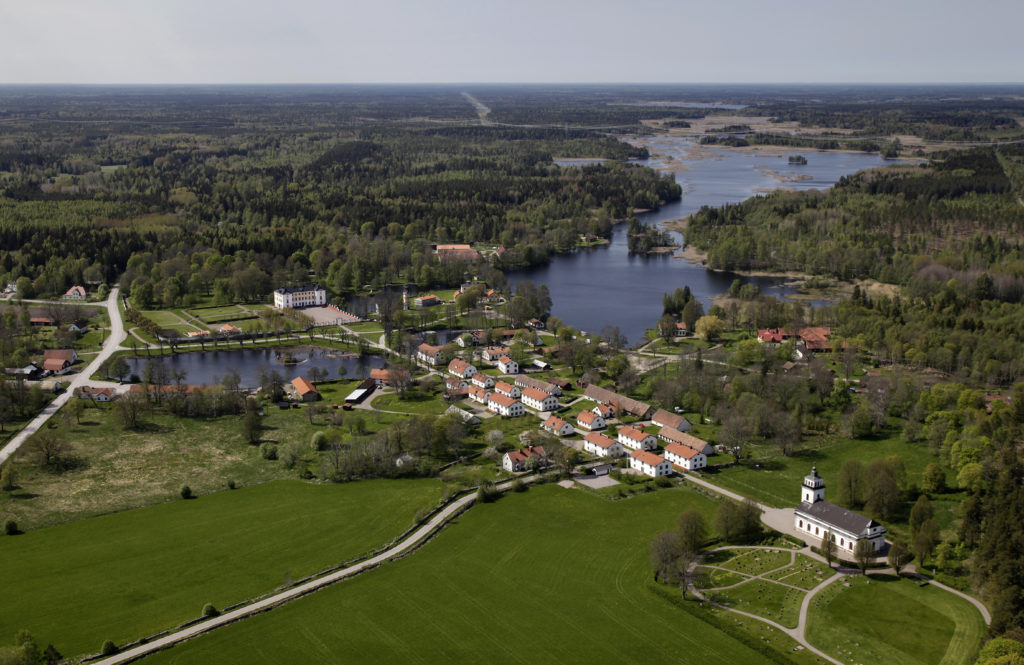
Forsmark is home to a number of nuclear facilities.
Forsmark is home to three of Sweden’s six operational power reactors and a repository for short-lived radioactive waste and is the location where the deep geological repository (DGR) for spent nuclear fuel will be constructed. Forsmark is situated within the Östhammar Municipality in east central Sweden, about 50 km from Uppsala. The municipality has a population of around 22,000 people within an area of around 3,700 km2.
Decades of research have demonstrated that deep geological disposal is the most effective method for removing highly radioactive waste from human contact for hundreds of thousands of years as it decays. DGRs can take different forms but all emphasize the need for safe and secure containment of the most hazardous forms of nuclear waste.
Radioactive waste is classified differently in different countries but generally relates to the waste’s level of radioactivity. In Sweden, fuel that is removed from reactors is considered used or “spent” and is the most radioactive type of waste produced. This spent nuclear fuel (SNF) contains fissile materials such as plutonium which is considered a direct-use material for nuclear weapons. Short-lived radioactive waste has a lower radioactivity level and includes the cladding from used fuel (intermediate level of radioactivity) or contaminated gloves (low level of radioactivity).
As of April 2021, there were six operational power reactors at three different sites, making up 34.1% of Sweden’s electricity production. Around 60 years of operation are still expected, after which they will be decommissioned. By the end of 2020, there were approximately 7,300 tHM of SNF in storage, with 4-5,000 more tHM expected by the end of current nuclear plant lifetimes.
Sweden’s SNF inventory makes up about 1.5% of the global inventory of civilian spent fuel, which is more than 440,000 tHM. Comparatively, the United States has the largest inventory with over 77,000 tHM (17.5%), followed by Canada with over 52,000 tHM (12%).
Photo Credit: Courtesy of the Swedish Nuclear Fuel and Waste Management Company, Photo Lasse Modin
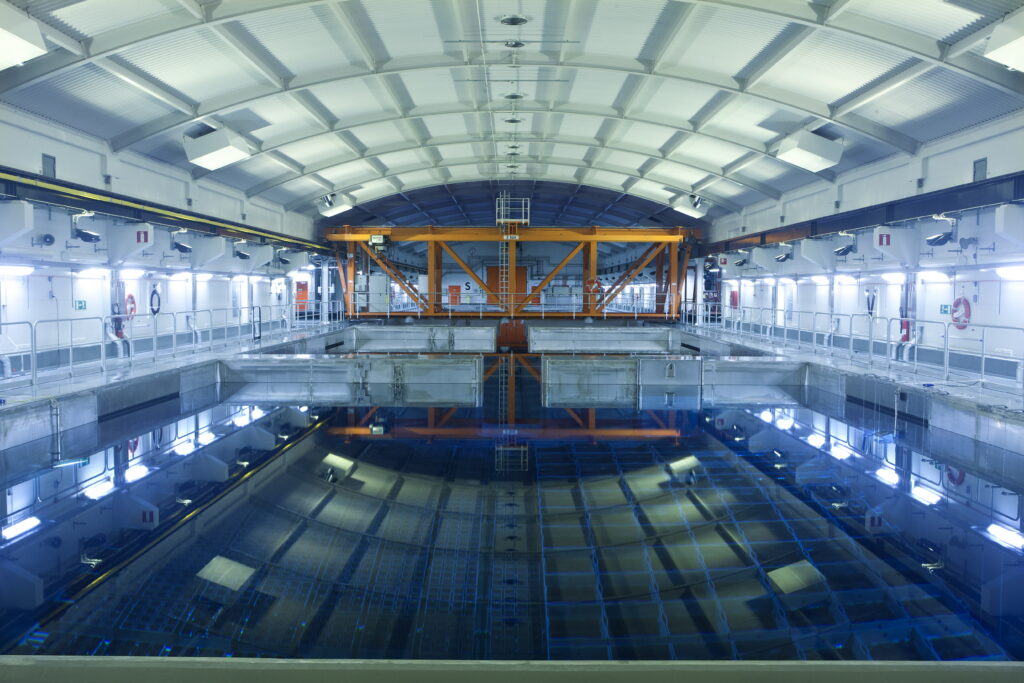
Sweden has the world’s first central interim storage facility for spent nuclear fuel.
Nuclear power plant owners are responsible for implementing waste management under the 1984 Act on Nuclear Activities. Every kWh of energy produced provides 0.05 Swedish kronor to the waste management fund. Utilities established the Swedish Nuclear Fuel and Waste Management Company (SKB) in the 1970s and jointly own it based on the percentage of domestic nuclear energy output produced by their plants. SKB is responsible for handling all of Sweden’s short and long-lived radioactive waste. The Swedish Radiation Safety Authority (SSM) is the regulatory body.
The Swedish Nuclear Fuel and Waste Management Company (SKB) is responsible for managing spent fuel and radioactive waste. To this end, SKB conducts research on technologies for waste disposal and operates facilities at different stages of the waste management process.
The Swedish Radiation Safety Authority (SSM) is responsible for regulating the safe and secure use of nuclear and radiological materials in Sweden. It operates under the Swedish Ministry of the Environment.
Current SNF management practice is one year of wet storage at nuclear power plants, then transportation to the Central Interim Storage Facility for SNF (known as Clab), which is the world’s first central interim storage facility for SNF. Clab has been operational since 1985 in Oskarshamn. Clab stores SNF in wet storage ponds with a total licensed capacity of 8,000 tHM. In 2015 an application was submitted to extend the facility license capacity to 11,000 tHM. As of September 2020, the inventory at Clab was around 7,300 tHM.
Photo Credit: Courtesy of the Swedish Nuclear Fuel and Waste Management Company, Photo Curt-Robert Lindqvist
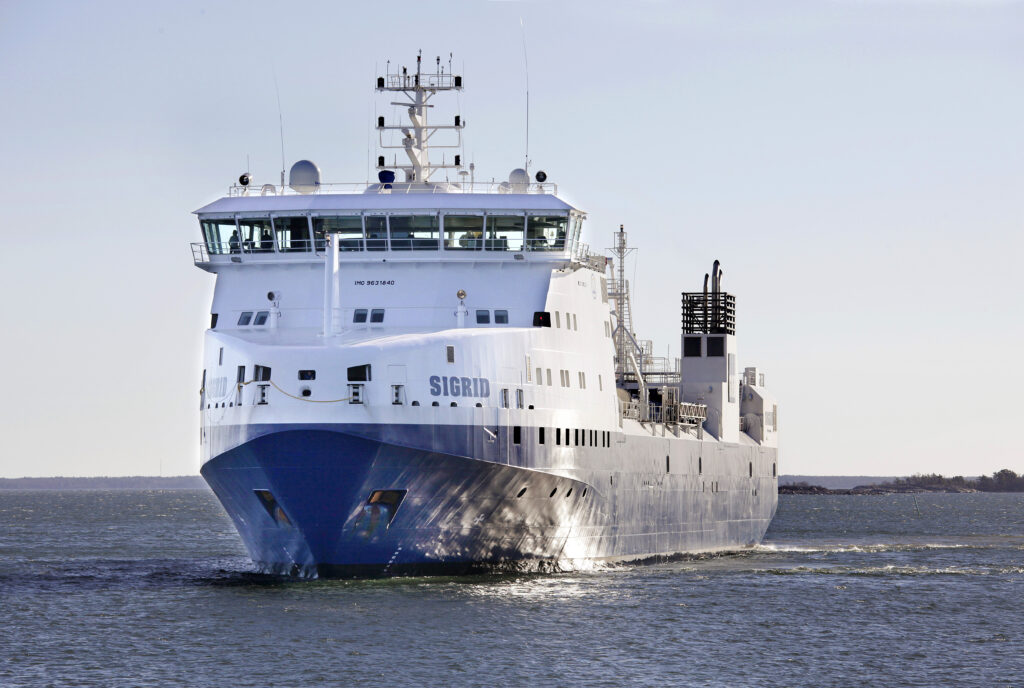
The future repository has extensive space for the disposal of Sweden’s spent fuel.
The spent fuel repository will be constructed at a depth of 500 meters. The underground surface area will take up three to four square kilometers and the 60,000 meters of tunnels will result in 2.3 million cubic meters of excavated rock.
The repository will only accept spent fuel from existing domestic reactors and will use the KBS-3 containment method, which is comprised of the copper canister, bentonite buffer, and bedrock. Each tunnel will hold approximately 30 canisters.
The fuel will be transported by sea on the ship Sigrid from the Clink encapsulation plant in Oskarshamn to Forsmark. The ship can carry 5 to 10, or possibly up to 12, transport containers.
Burying nuclear waste underground keeps it safely contained and isolated from human activity. Certain rock types, for example clay or granite, help to prevent radioactive material from reaching the surface or its contact with groundwater.
Photo Credit: Courtesy of the Swedish Nuclear Fuel and Waste Management Company, Photo Lasse Modin
Sweden’s DGR planning has taken over 40 years and it is now near approval.
Geological surveys of Sweden’s bedrock began in 1977 and the site selection process for the DGR began in 1992 with a voluntary response approach to selecting a host municipality. In 2009, after around 5 years of site investigations, SKB selected Forsmark as the proposed site for the DGR and submitted a license application in 2011. At that time SKB also applied for licensing of the KBS-3 containment method.
In late 2017 the Land and Environmental Court conducted a series of hearings and found that the application was largely ready for approval but requested more discussion of the copper canisters. After the municipalities voted to accept the spent fuel repository (at Östhammar) and the encapsulation plant (Oskarshamn), the application was provided to the Swedish government on January 23, 2018 for final approval.
The Östhammar Municipal Council approved the repository on October 14, 2020 and construction is expected to begin in the 2020s and take around 10 years once the municipality issues a construction permit. The operation period will be around forty-five years beginning in the 2030s, after which there will be a decommissioning and closure period of fifteen years.
Photo Credit: Courtesy of the Swedish Nuclear Fuel and Waste Management Company, Photo Lasse Modin, Illustration Phosworks AB
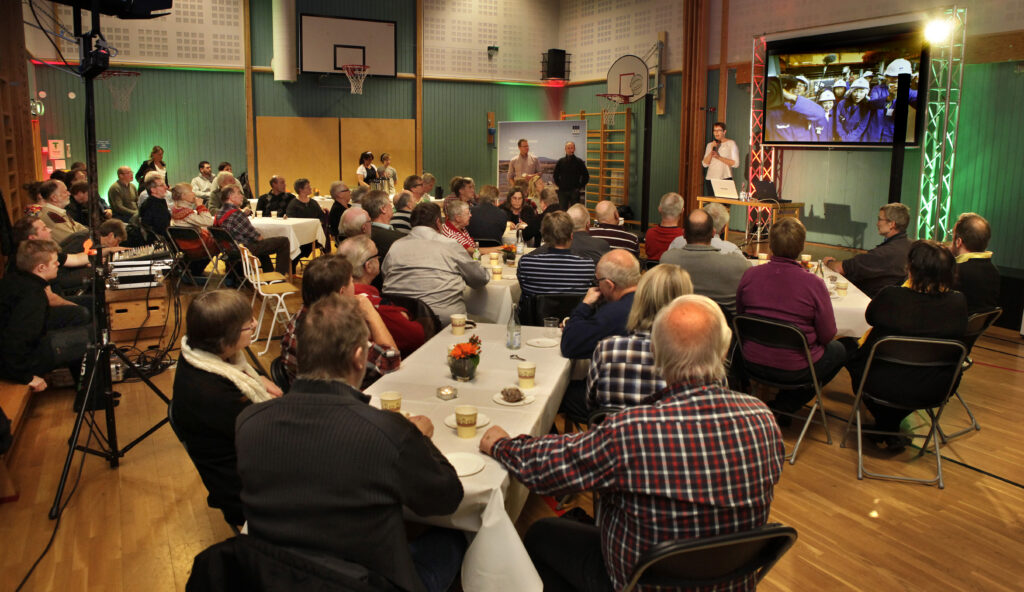
Public engagement has been key to develop a DGR
Public engagement has been a significant component of the development of a DGR in Sweden for both SKB and SSM. In October 2020 Östhammar Municipality agreed to host the DGR, contributing a major step towards the DGR’s progress. In November 2020 an opinion poll revealed 66% of Swedish citizens want a DGR now, while 11% said it should wait. SKB has reported an increase in confidence in its activities over time from the communities in both Östhammar and Oskarshamn, the site of the Clab facility.
SSM also conducts outreach activities to: develop competence management particularly among youth, maintain interest in the municipalities, and maintain trustworthy dialogue by incorporating risk communication and a diversity of views. SSM emphasizes the need for preserving public and institutional awareness of the DGR’s process and status through effective public information sharing and preservation. Stakeholders will need to determine how best to address public engagement after a DGR is approved, as there is no formal procedure after that point.
Photo Credit: Courtesy of the Swedish Nuclear Fuel and Waste Management Company, Photo Lasse Modin
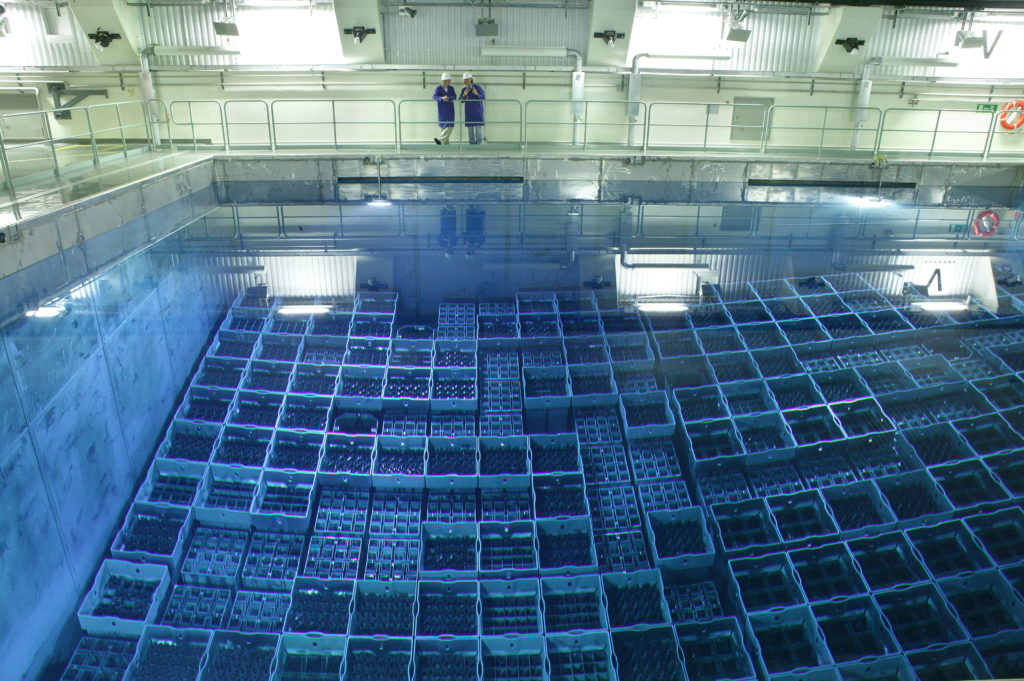
Regional and international regulators are helping develop nuclear safeguards for the facility.
Sweden is a non-nuclear-weapon State party to the Treaty on the Non-proliferation of Nuclear Weapons and, as such, its nuclear material and facilities are under international safeguards. Safeguards activities are conducted in accordance with the trilateral agreement among Sweden as a member of the European community, Euratom, and the International Atomic Energy Agency (IAEA). Safeguards will be required on SNF so long as the trilateral agreement is in force because the IAEA considers spent fuel to be retrievable even after disposal underground. Discussions about technical applications for safeguards at the DGR and at pre-DGR facilities are ongoing.
The IAEA is an international organization tasked with monitoring and verifying the peaceful use of nuclear technology and material. Through coordination with member States and the application of international safeguards measures, the IAEA works to prevent nuclear energy facilities and material being diverted towards nuclear weapons programs. It was established on the 29th of July, 1957.
The European Atomic Energy Community (Euratom) was established on the 25th of March 1957 to create a single European market for trade in nuclear materials and technology. It also coordinates the research programs of its EU member States for the peaceful uses of nuclear energy. Euratom coordinates with the IAEA to apply safeguards.
Photo Credit: Courtesy of the Swedish Nuclear Fuel and Waste Management Company, Photo Curt-Robert Lindqvist
Sweden is one of the most advanced in its development of disposal facilities for SNF.
The virtual visit to Sweden is undertaken as part of the Stimson Center’s “Back-End to the Future” project which is studying national approaches to radioactive waste and spent fuel disposal. As one of the most advanced countries in the development of a national final disposal facility for spent fuel, Sweden serves as an example of a robust geological disposal planning process that accounts for technical, political, and societal considerations as well as non-proliferation in the disposal of spent fuel.
Photo Credit: Courtesy of the Swedish Nuclear Fuel and Waste Management Company, Photo Lasse Modin
Header Image Photo Credit: Courtesy of the Swedish Nuclear Fuel and Waste Management Company, Photo Lasse Modin, Illustration Phosworks AB


